Surrounded by wild coastal beauty, unchanged from when Vikings raided its shores, and accessed by a dramatic causeway from the mainland, the Holy Island of Lindisfarne fires the imagination like few other places I have visited.
Crumbling ruins of a medieval priory tell the story of the monks who settled here 1400 years ago, and a diminutive castle keeps watch over Holy Island from a rocky outcrop. Birdlife, flora and fauna abound, including seals from the neighbouring Farne Islands who are frequent visitors.
At just three miles in length and one and a half miles across, it is easy to explore Lindisfarne in one day, even without a car. Discover how to take a day trip to the Holy Island by public transport and what to see.

How to Get to Holy Island
Lying off the Northumberland coast in the northeast of England, just a few miles south of the border with Scotland, this tidal island is cut off from the mainland twice a day. Getting to Holy Island can be a bit of an adventure, especially if you get marooned on the island!
Whichever way you do it, visiting Holy Island by public transport requires planning.
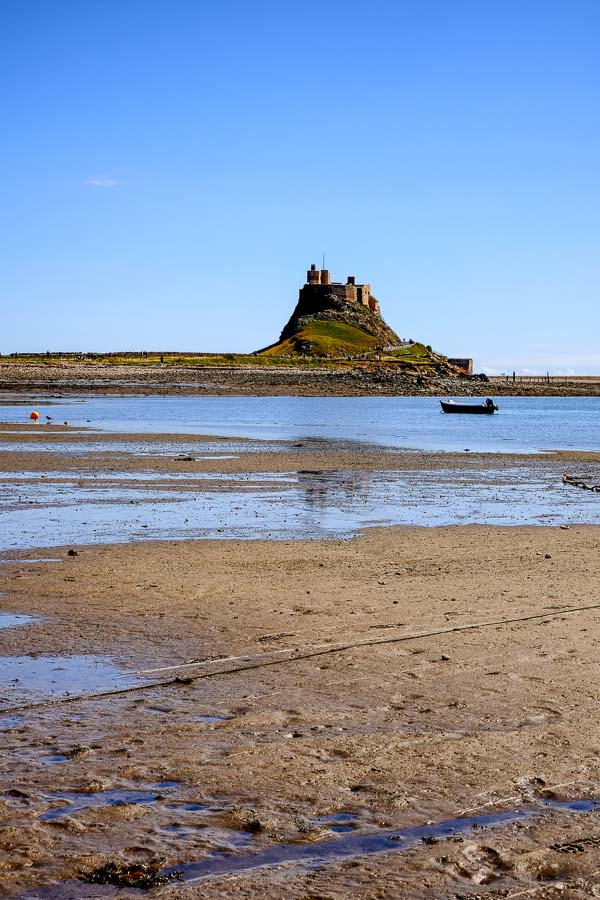
Getting to Holy Island by car
Holy Island is about five miles from Beal, on the main A1 road.
There is a large car park on the left before you enter the village. The payment machines take cash or cards.
There is a smaller car park in the village. However, this is reserved for buses and coaches with limited spaces for blue badge holders. There is also a free public toilet here.
Catching a bus to Holy Island
The best way to reach Holy Island if you don’t have a car is by the 477 bus service from Berwick run by Borders Buses. The journey takes around 35 minutes.
The times of this infrequent bus service are scheduled to tie in with safe tide times. As this is a seasonal bus service, doing a day trip to Holy Island by bus is limited to the summer months.
Getting a taxi to Holy Island
If there are a few of you, a local taxi from Berwick may be a good option. Several operators will quote you a fare.
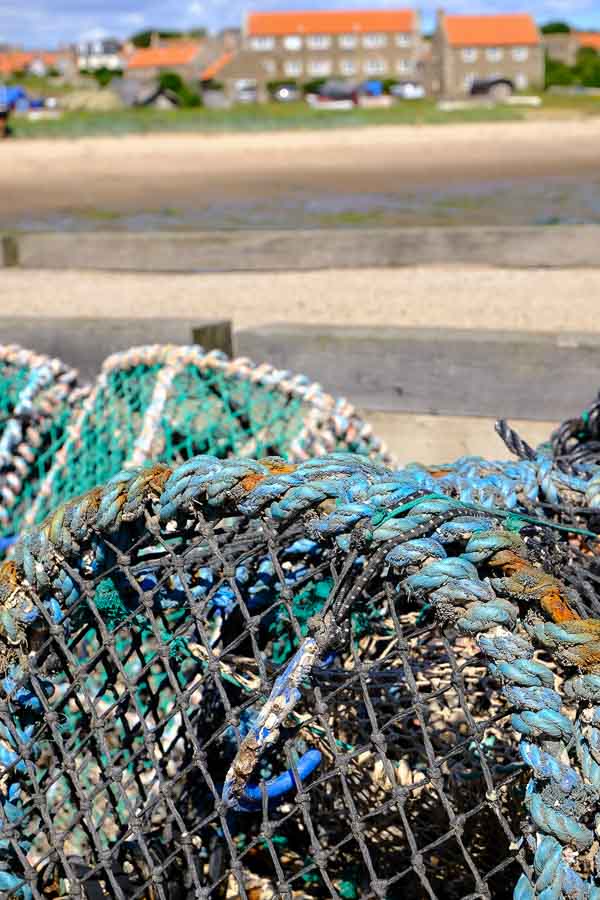
Walking to Holy Island
The Pilgrim’s Path
A series of vertical poles, mark a route across the sands and mud between the mainland and the island. Following the footsteps of medieval Christians, walking the Pilgrim’s Way to Holy Island takes about two hours.
As with other modes of transport, checking the tide times is essential, setting off in daylight two hours before low tide.
Along the causeway
Alternatively, you can follow the main causeway to Holy Island. Just take care with the fast-flowing traffic sharing the road.
Getting to Holy Island by boat from Seahouses
Another option is to take a boat trip from Seahouses to Holy Island.
Between May and October, Billy Shiels Boat Trips offer a four-hour excursion, sailing along the coastline and the Farne Islands, and includes two hours ashore on Holy Island.
These boat excursions look wonderful. There are greater opportunities for wildlife spotting and they have the advantage of visiting Lindisfarne during high tide when it is much quieter.
However, as some of the island’s attractions’ opening times are dictated by the tidal timetable, they may not be open. Also, if you do not have a car, Seahouses is more difficult to get to than Berwick.
Best Things to Do on the Holy Island of Lindisfarne
Climb to The Heugh
To get your bearings, I recommend starting your day in Lindisfarne with a short walk. For the best views of Lindisfarne Priory and Castle and those across to Bamburgh Castle and the Farne Islands, climb the high ridge known as The Heugh.
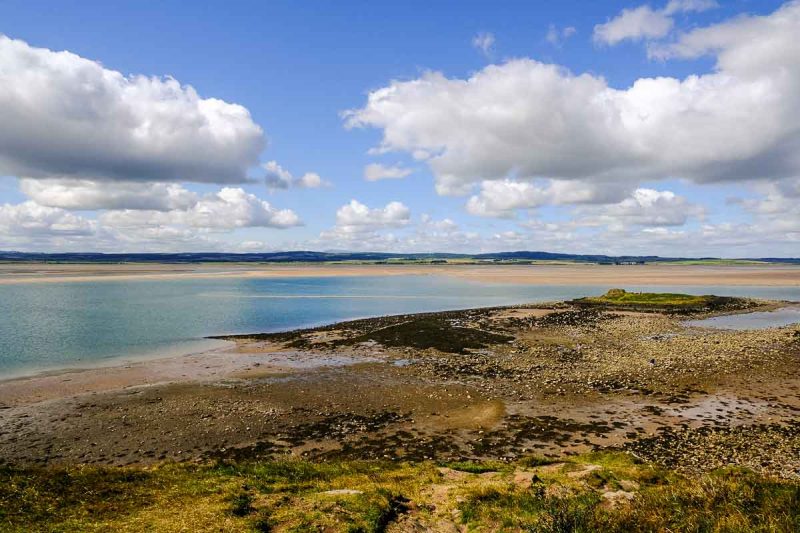
From the footpath from the village, turn right and head to the Lookout and Lantern Chapel. Then retrace your steps, passing the war memorial and shipping beacon to Osborne’s Fort built in the 1670s to protect Holy Island from Dutch raids.
Visit Lindisfarne Priory and Priory Museum
Visiting Lindisfarne Priory, the birthplace of The Lindisfarne Gospels, an illuminated Latin manuscript now in the British Museum in London, is an essential part of a Lindisfarne itinerary.
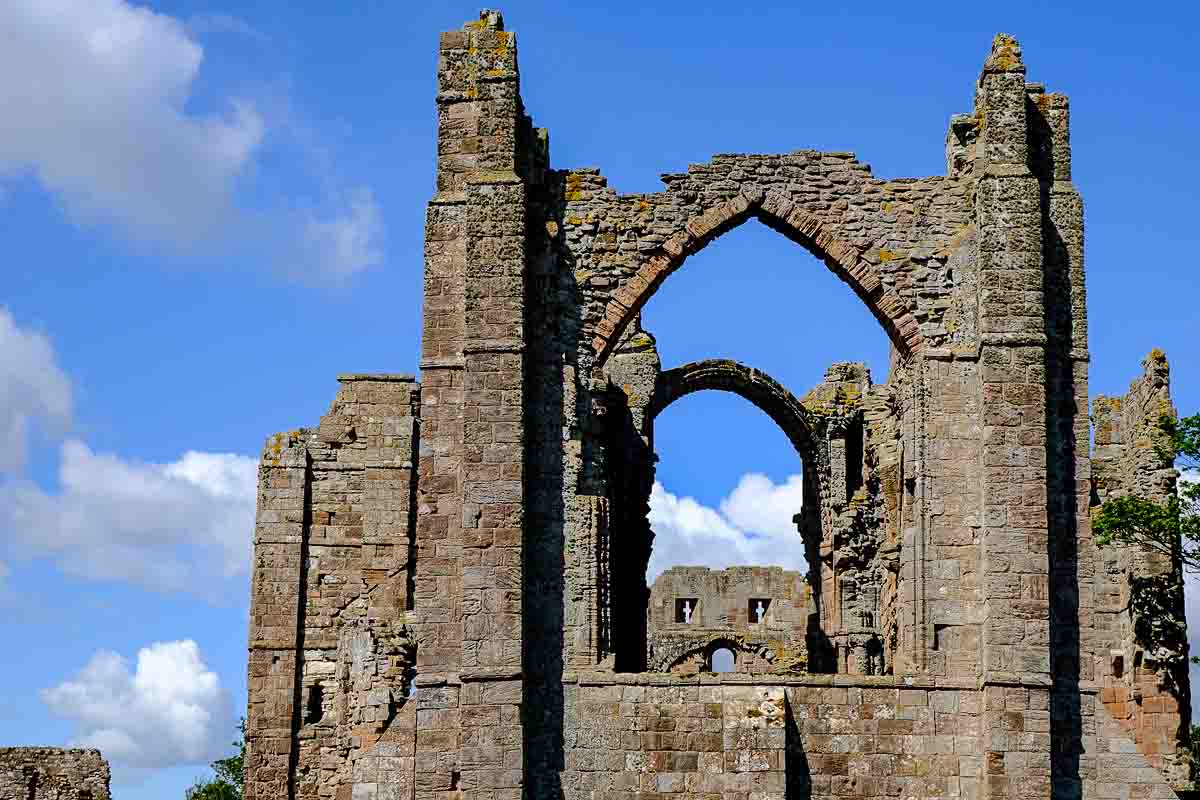
The remains of the 12th Century monastery, with its striking ‘Rainbow Arch,’ is a wonderfully evocative sight. Much of Lindisfarne Priory was destroyed during The Reformation
If you have time to spare, stop by the Priory Museum to discover more about the history of the priory and of St Cuthbert, the bishop of Lindisfarne, who worked throughout Northumbria.
Visit Lindisfarne Castle
When is a castle not a castle? When it is an Edwardian holiday home.
Perched high on a basalt outcrop, Lindisfarne Castle looks like it has been lifted from the pages of a child’s storybook. Completed in 1570, it housed temporary garrisons of soldiers on detachment from the larger force based at Berwick.
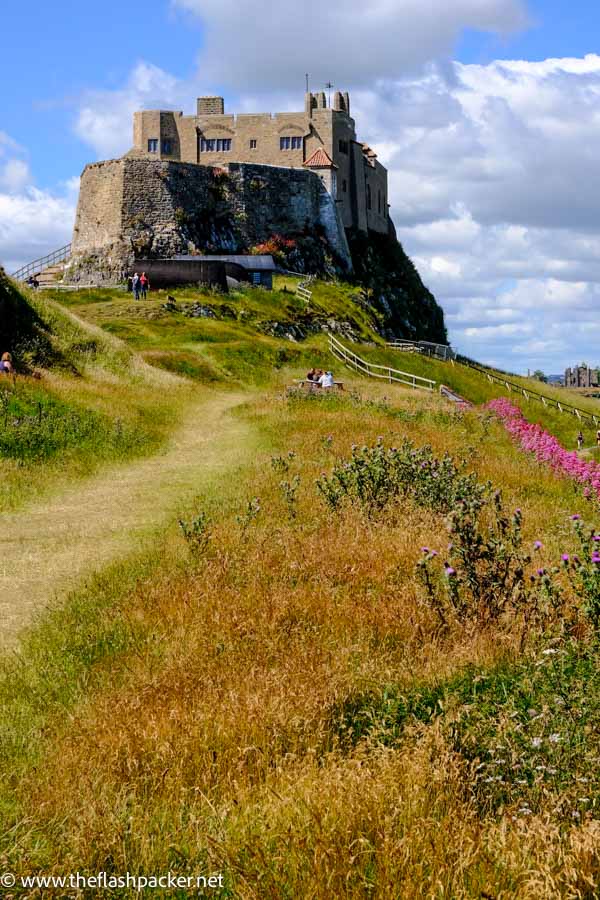
The castle was decommissioned in 1893 but rediscovered in 1901 by Edward Hudson, editor of Country Life. With the help of his friend, the renowned architect Edward Lutyens, he transformed the old fort into a holiday home.
Lindisfarne Castle is run by The National Trust. Opening times vary according to the tides.
Smell the blooms in The Gertrude Jekyll Garden
A friend and collaborator of Lutyens, the Arts and Crafts garden designer, writer and artist Gertrude Jekyll, created this small walled garden in 1911 alongside the castle. During the summer months, it is a fragrant riot of colour.
The Gertrude Jekyll Garden is managed by National Trust volunteers and is free to visit.
Check out the lime kilns of Holy Island
Once upon a time, Holy Island was the largest producer of lime in England. The lime kilns on the island today were last used in the 19th Century.
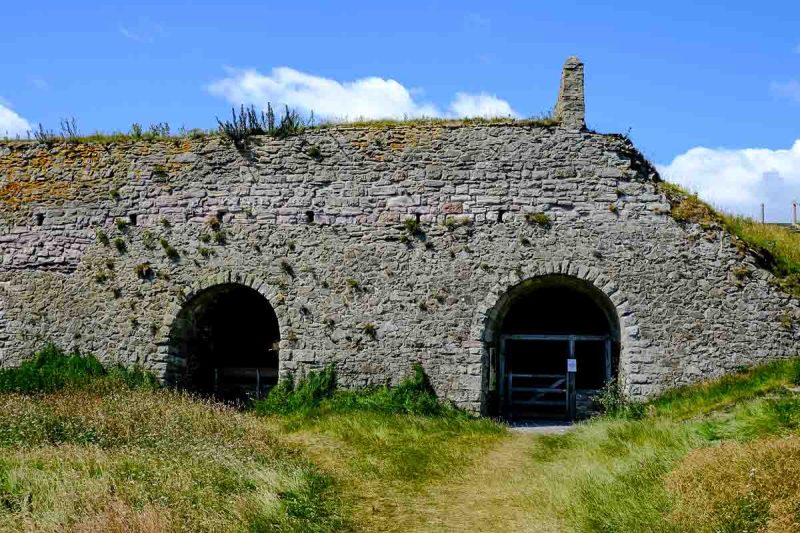
Lime was quarried from Lindisfarne and transported to the kilns, where it was fired by coal brought in by ship from Newcastle or Amble.
Discover Lindisfarne’s upside-down fishing boats
Don’t leave Lindisfarne before checking out the island’s iconic boat sheds in the harbour.
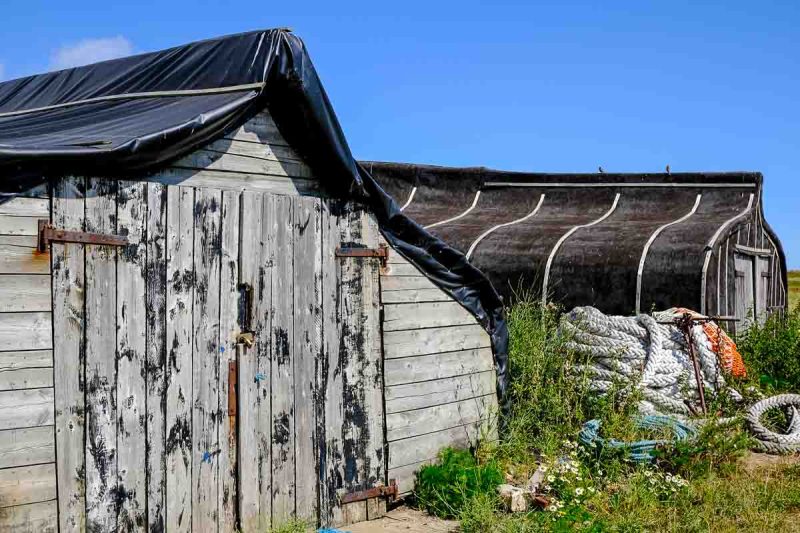
Fashioned from herring fishing vessels that have been cut in half and turned upside down, these boat sheds now serve as sheds for storage.
Now part of Lindisfarne’s heritage, and beloved of photographers from near and far, these upside-down boat sheds are even used as offices at the entrance to the castle.
Sample Lindisfarne Mead
Mead is a fortified wine that was produced by the monks on Lindisfarne and is traditionally made from fermented honey diluted with water. Made exclusively on the Holy Island of Lindisfarne, mead is one of the oldest drinks in the world and is said to be an aphrodisiac!
To learn more about the ‘Nectar of the Gods’, stop by Lindisfarne Mead.
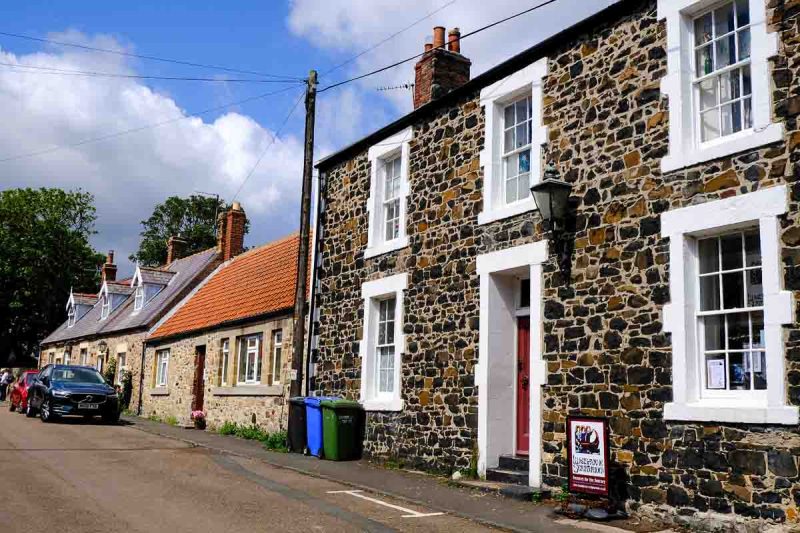
Learn more about Holy Island at The Heritage Centre
For a small fee, pop into The Heritage Centre, a museum displaying information and exhibits related to the history of Holy Island, including an interactive copy of the Lindisfarne Gospels.
Its shop has a broad selection of books and souvenirs related to the island.
Stop by St. Mary’s Church
Adjacent to Lindisfarne Priory, The Parish Church of Saint Mary the Virgin, or just St. Mary’s for short, is built on the site of the original 7th-century monastery.
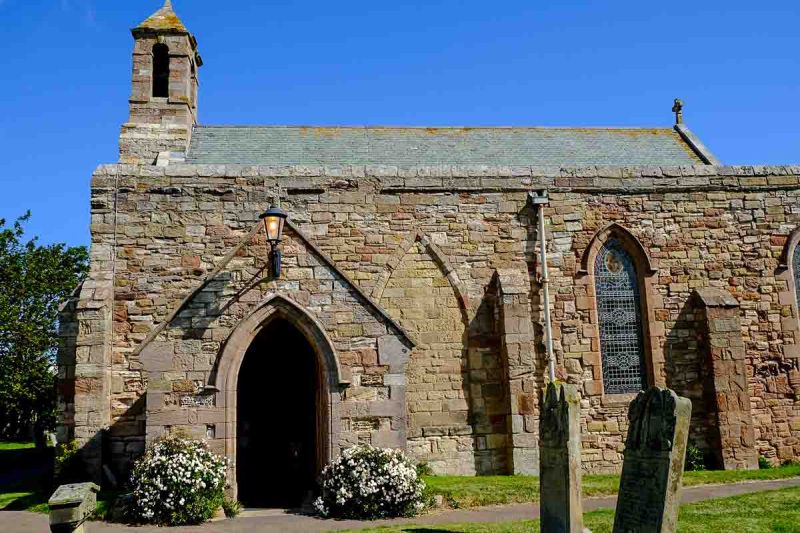
At the time of St. Cuthbert, the first St. Mary’s Church was made of wood but was rebuilt in stone in the 12th Century.
If you have time to visit inside, take a look at Fenwick Lawson’s moving wooden sculpture of monks carrying the coffin of St. Cuthbert.
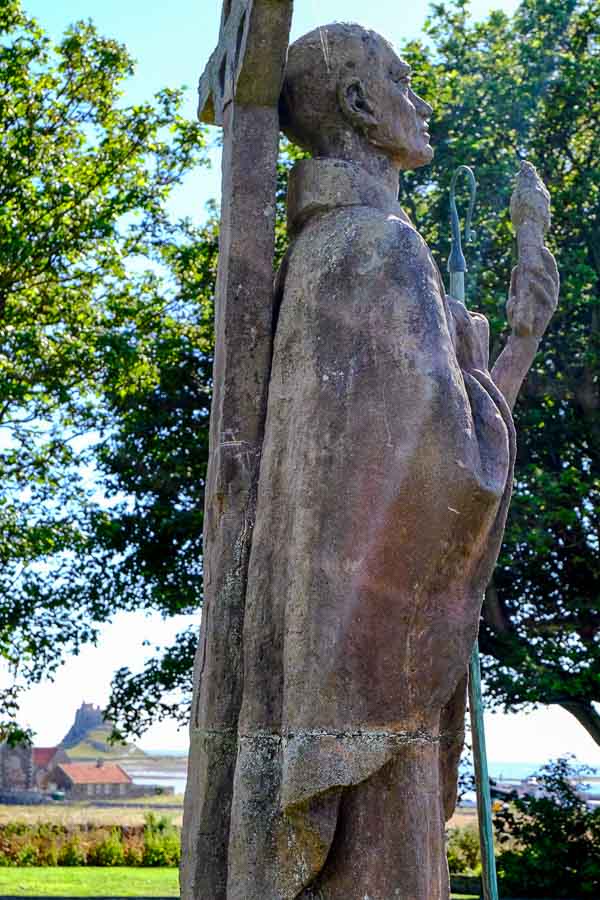
Go seal spotting
Throughout summer, Holy Island is prime seal-spotting territory. Pack your binoculars.
Seals have been spotted at these locations:
- The sandbanks (between St. Cuthbert’s Island and the mainland)
- Guile Point (opposite the Lookout tower).
- At high tide – swimming in pairs or groups between the sands and the Castle and near headlands to the north of the island (Castlehead Rocks, Emmanuel Head and Keel Head). Prime viewing points are St. Cuthbert’s Island, The Lookout and the path between the harbour and the Castle.
Solo Travel in England
England is one of the best places to travel alone in the world, especially if you are a first-time solo traveller.
Most first-time visitors head to the capital – check out these great solo activities in London! – but the country is so much more than this. From dynamic cities to seaside towns and rolling hills, England offers a vast variety of places to visit.
It is an English-speaking country, making it an easy destination for visitors from Australia, the US and many European countries.
Public transport is well developed with extensive and frequent rail links across much of the country. Coaches or local buses usually serve places that don’t have a train station nearby.
English people are generally friendly, especially in the north of the country and outside of the main cities. Although Londoners have a reputation for being standoffish, in my experience this is overstated and people will usually try to help you.
As a hugely popular solo travel destination, it’s easy to meet other travellers in England, particularly in the main cities.
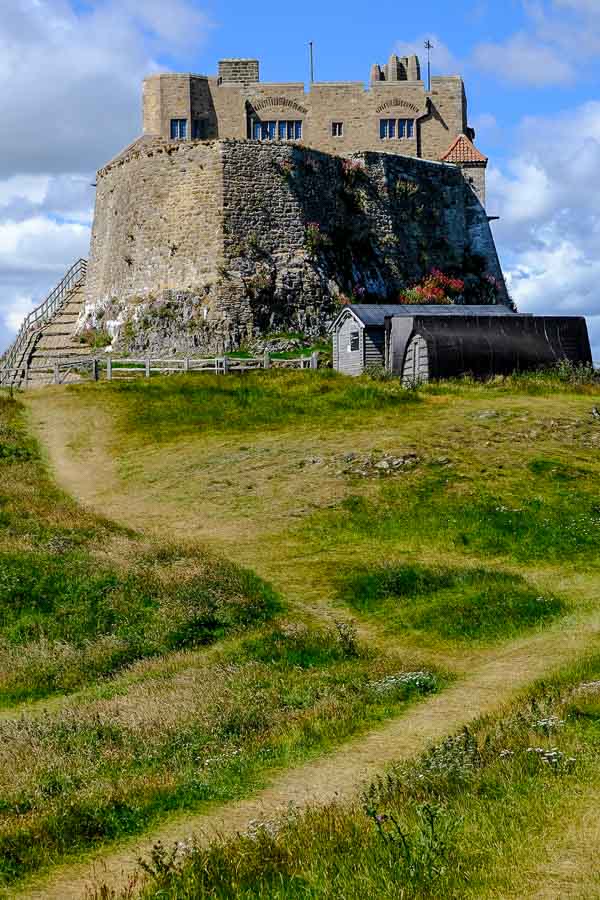
Enjoy your day trip to Lindisfarne
It is a special place.
I visited as part of a Northern England itinerary. In addition to using beautiful Berwick-upon-Tweed as a base to visit Holy Island, I also had a fun weekend in Newcastle and rode the iconic Settle to Carlisle Railway.
Happy travels!

About Bridget
Bridget Coleman has been a passionate traveller for more than 30 years. She has visited 70+ countries, most as a solo traveller.
Articles on this site reflect her first-hand experiences.
To get in touch, email her at hello@theflashpacker.net or follow her on social media.
